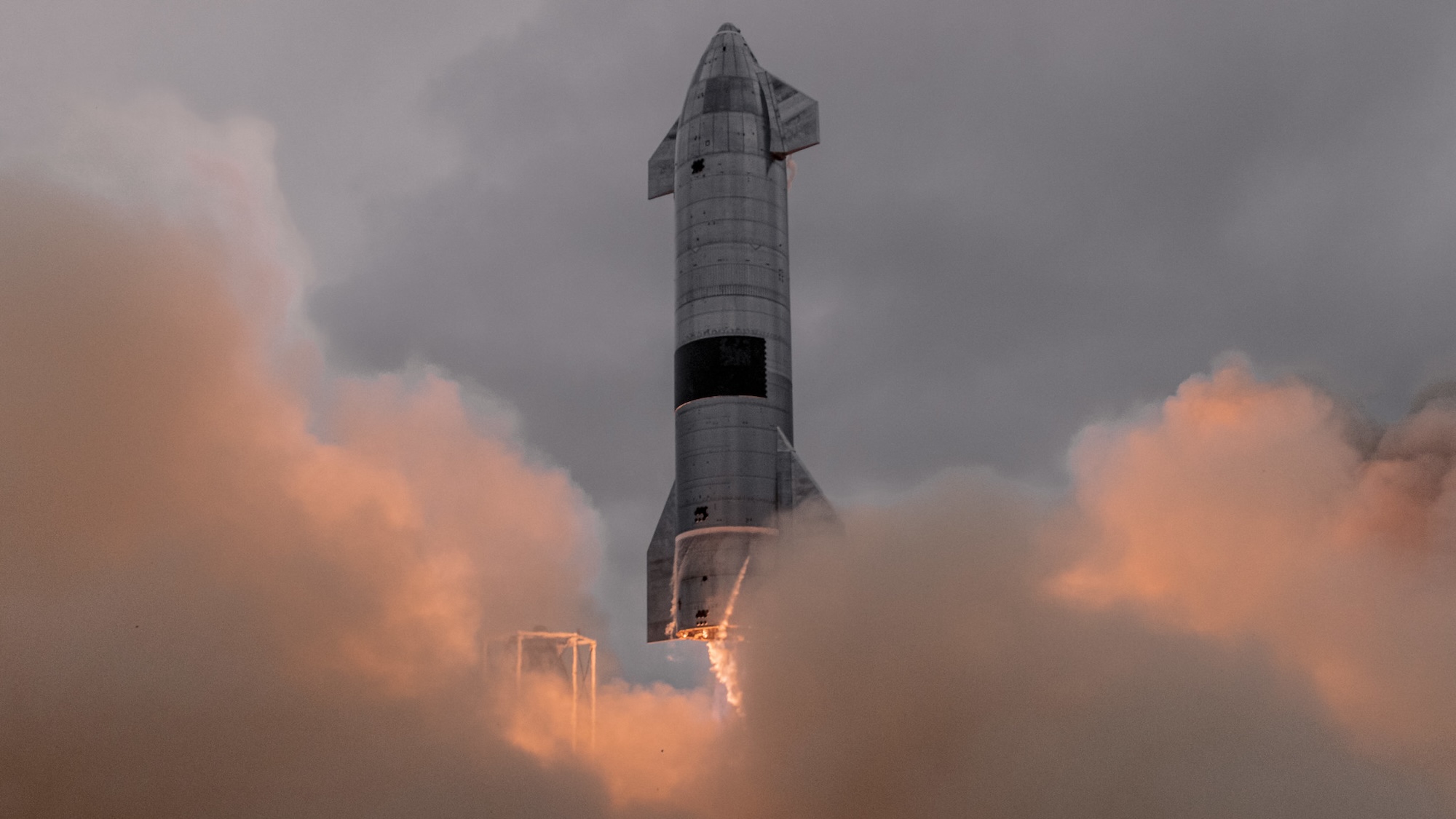

NASA’s Artemis astronauts are currently slated to land on the moon in 2026 aboard SpaceX’s massive Starship. According to researchers, however, relying on a 15-story-tall spacecraft with 16.7 million pounds of thrust may not be the best idea—especially if humans hope to study and use potential water reserves underneath the lunar surface.
Although its reusable stage has yet to successfully return intact, SpaceX’s Starship appears on track to eventually pull off the necessary feat. But each of the four test launches have come with hefty impacts near the Texas launchpad. Upon liftoff, Starship’s 33 Raptor engines have already blasted massive craters into the ground, shattered windows, destroyed vehicles, and generated huge plumes of dust and debris.
In a paper published in The Planetary Science Journal, researchers at the Space Science Institute, NASA, Johns Hopkins University, and DeepSpace Technologies argue the power needed to land Starship’s 164-feet-tall upper stage (its 226-feet-tall lower stage detaches after leaving Earth’s orbit) could contaminate portions of the lunar surface before its passengers even step foot onto the moon. More specifically, it could foul up any icy cold traps located across the moon’s permanently shadowed regions, or PSRs, near the lunar south pole.
[Related: SpaceX’s fourth Starship launches.]
Previous data collected during NASA’s Lunar Reconnaissance Orbiter’s Lyman Alpha Mapping Project (LAMP) indicates water frost could compose somewhere between 1-to-2 percent of PSR surface soil. As Space.com noted on June 9, further analysis suggests as much as 60 tons of water may reside deeper within these areas—sizable reserves that astronauts could harvest for drinkable water, oxygen, and hydrogen rocket fuel.
But experts will need to study any lunar surface frost before anyone can confirm the existence of these underground PSR ice reservoirs. Past NASA observations from neutron spectrometers suggest at least some ice is down there, although it could also come from other sources such as water migration by way of solar wind, or even mini-meteoroids.
Studying the surface frost’s formation would be key to understanding water dynamics on the moon. Using exospheric modeling and other analysis, however, researchers estimate Starship’s rocket-powered landing plumes from its upper stage may make a mess by generating over 10 tons of water and icy particles that mixes with the existing frost. What’s more, it may only take four Starship lunar landings to generate as much, or more, existing surface frost in PSRs—basically rendering any future analysis impossible at those sites.
“This anthropogenic contribution could possibly overlay and mix with the naturally occurring icy regolith at the uppermost surface,” the team writes in its study. “A possible consequence is that the origin of the intrinsic surficial icy regolith, which is still undetermined, could be lost as it mixes with the extrinsic anthropogenic contribution.”
To put matters into perspective, researchers examined the potential disruptions caused by the Apollo missions’ much smaller lunar landers after analyzing their own plumes. In their findings, such craft would only add less-than-one percent of water to existing frost. That’s approximately 30 times less human-generated contamination than a potential Starship landing.
As NASA and SpaceX inch closer to return humans to the moon, researchers suggest employing existing and upcoming equipment to further investigate the possible situation. Aside from examining the before-and-after of a Starship landing (possibly even a test landing on the lunar surface), NASA could also direct its upcoming Volatiles Investigating Polar Exploration Rover (VIPER) to record a Starship moon landing in real time. Such considerations could be vital to ensuring humanity doesn’t trash the moon (or beyond) like it’s currently doing here on Earth.
Popular Science has reached out to NASA and the paper’s authors for comment.